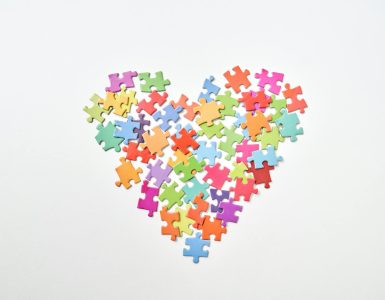Ever wondered why you make the choices you do? Why you react the way you do to certain situations? We all like to think we’re rational beings, making conscious decisions based on logic and reason. But the truth is, our minds are a fascinating, often chaotic, mix of conscious thought and unconscious biases, shaped by evolutionary pressures and influenced by factors we barely understand.
Psychology helps us peel back the layers of this complexity, revealing hidden patterns in how we think, feel and act. It’s not about labeling people, but about understanding the underlying mechanisms that drive our behavior. Let’s dive into some fascinating examples:
The Power of Priming: Your Brain on Subtle Cues
Imagine you’re walking down the street and you see a homeless person. Before you even consciously think about it, your brain might already be making judgments, influenced by countless subtle cues. This is “priming”—the unconscious activation of certain associations. Studies show that if you’ve recently seen images of elderly people, you’ll walk slower yourself. Exposure to words associated with rudeness can make you more likely to interrupt someone. The power of priming demonstrates how our environment silently shapes our behaviour, often without our awareness.
The Bystander Effect: The Diffusion of Responsibility
The infamous Kitty Genovese case highlighted a chilling phenomenon: the bystander effect. When many people witness an emergency, each individual feels less responsible for taking action. This diffusion of responsibility often leads to inaction, even when help is desperately needed. Experiments like the one by Darley and Latané, where participants were separated and thought they were talking to one other person or several, showed this phenomenon in action. The ones who thought they were the ONLY ones listening to a simulated seizure were drastically more likely to actively help. The Mind's Quirks: Unpacking the Everyday Psychology of You and Me
Cognitive Biases: The Mental Shortcuts That Steer Us Wrong
We all have mental shortcuts – cognitive biases – that simplify complex decisions. While often useful, they can lead to systematic errors in judgment. Confirmation bias, for example, is our tendency to seek out information that confirms our existing beliefs and to ignore information that contradicts them. This explains why it’s so hard to change someone’s mind on a deeply held belief.
The availability heuristic is another common bias. We overestimate the likelihood of events that are easily recalled, often because they were vivid or recent. Think about how the media’s portrayal of crime can make it seem more prevalent than it actually is.
The Halo Effect: One Good Trait, Many Assumptions
Have you ever met someone who is attractive and immediately assumed they were also intelligent and kind? That’s the halo effect – our tendency to let one positive trait influence our overall impression of a person. This bias can significantly impact our judgments in various contexts, from hiring decisions to relationships.
The Framing Effect: How Presentation Changes Perceptions
The framing effect shows how the way information is presented can dramatically alter our choices. For example, a surgery with a 90% survival rate sounds much more appealing than a surgery with a 10% mortality rate, even though they describe the same outcome. Marketing and advertising leverage the framing effect constantly to influence our purchasing decisions.
Conformity and Obedience: The Power of Social Influence
Solomon Asch’s conformity experiments demonstrated how easily people will conform to group pressure, even when they know the group is wrong. Participants were asked to judge the length of lines, and when confederates (actors) gave obviously wrong answers, a significant portion of participants conformed to avoid standing out. Milgram’s obedience experiments revealed a similar disturbingly high level of obedience to authority figures, even when instructed to administer potentially harmful electric shocks.
The Fundamental Attribution Error: Blaming the Person, Not the Situation
We often overemphasize personal traits when explaining others’ behavior and underestimate situational factors. If someone cuts us off in traffic, we might assume they’re a terrible driver (dispositional attribution), rather than considering that they might be rushing to the hospital (situational attribution). This fundamental attribution error shapes our understanding of others’ actions and influences our reactions to them.
The Power of Placebo: Mind Over Matter (and Body)
The placebo effect demonstrates the remarkable power of belief. Giving patients a sugar pill that they believe is a powerful medicine can produce real physiological effects, such as pain reduction or improved mood. This highlights the intricate connection between the mind and body and the undeniable influence of expectations on our physical well-being.
Real-World Implications: From Marketing to Politics
Understanding these psychological principles isn’t just an academic exercise. They have significant real-world implications. Marketers use priming and framing to sell products. Politicians exploit cognitive biases to win votes. Awareness of these patterns can empower us to make more informed decisions, to resist manipulation, and to build stronger, more empathetic relationships.
The study of psychology isn’t about reducing human experience to a series of predictable equations, but it is about revealing the hidden currents that shape our individual and collective behaviors. By understanding these patterns, we can gain a deeper appreciation for the complexity of the human mind and the fascinating dance that makes us who we are.
























Ajouter un commentaire